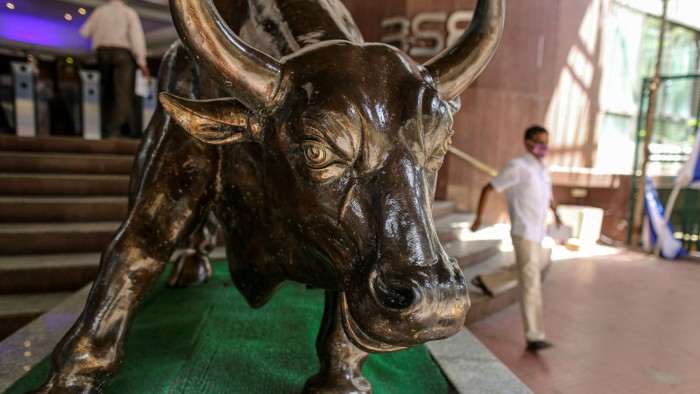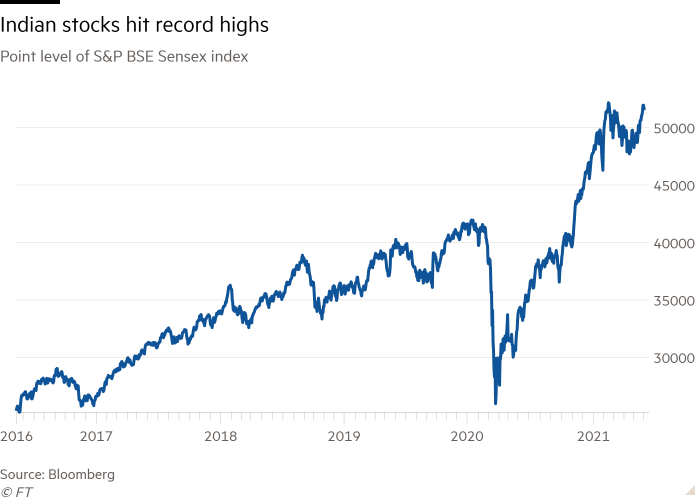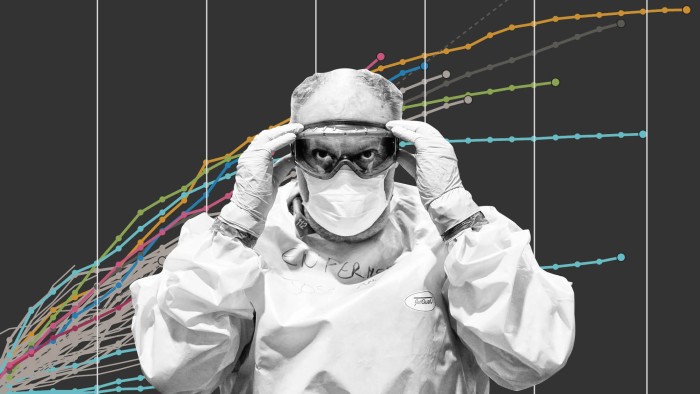Global investors bet that India’s brutal Covid-19 wave has peaked

Simply sign up to the Indian business & finance myFT Digest -- delivered directly to your inbox.
Global investors are betting that the worst of India’s catastrophic second coronavirus wave has passed, helping to push the country’s stocks to record highs.
The Nifty 50 index, which tracks India’s largest 50 companies, peaked this week and is up 9 per cent from its low in late April when Covid-19 infections were surging.
The enthusiasm has spread to other Indian assets, with the rupee rising 4 per cent against the dollar over the same period.
The demand for Indian stocks highlights relief among investors that the second wave appears to have peaked. But it also underscores how traders see little to upset bumper profits for India’s largest companies, despite the country still reporting more than 100,000 Covid-19 cases per day.

“To value India from the equity investment perspective, investors will look beyond the current human catastrophe,” said Brijesh Ved, an equities portfolio manager at BNP Paribas Asset Management India.
Ved added that the country would probably emerge from the pandemic as the fastest-growing economy in the world and that “long-term fundamental investors like ourselves continue to look at India as a growth market”.
Some Indian companies have thrived during the pandemic, in part thanks to cost cuts including lay-offs. Profit margins as of the end of 2020 were at an eight-year high, according to Edelweiss Financial Services, a brokerage.
“The pie may have shrunk but the allocation of profitability has shifted very sharply to . . . top-end businesses, which is what is reflected in the market indices,” said Aditya Narain, head of research at Edelweiss.
India’s second wave overwhelmed health systems and caused acute shortages of oxygen and drugs and hit the economy. But infections are now falling in much of the country, including in the capital New Delhi and financial hub Mumbai.
Authorities on Wednesday reported 133,000 new infections and 3,200 deaths for the previous day, down from daily highs in May of more than 400,000 and 4,500, respectively. Official figures are believed to be vast undercounts.
Vikash Kumar Jain, investment analyst at brokerage CLSA, said foreign inflows began to pick up in recent days following substantial outflows in April and May.
He added that investors could rush to increase their exposure to India’s economy, which may have recovered from the second wave by the end of the year.
Indian companies’ first-quarter earnings did not reflect the worst of the latest wave, which picked up in April. However, investors suspect any earnings hit will be brief.
“You get a sense that it’ll be a one or two month impact and there’ll be normalcy, then earnings growth is going to bounce back very sharply,” said Hemang Jani, an equity strategist at brokerage Motilal Oswal Financial Services.
Yet Narain cautioned that the second wave could have a more lasting impact than the first, especially in areas such as consumer demand.
There “could be a little bit of a reality check for the markets”, he said, adding that “there isn’t a family that has been left unimpacted”.
Latest coronavirus news

Follow FT's live coverage and analysis of the global pandemic and the rapidly evolving economic crisis here.
Comments